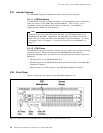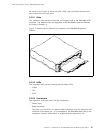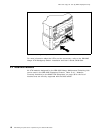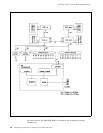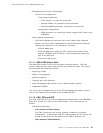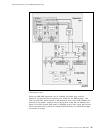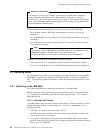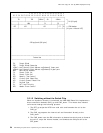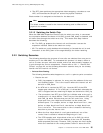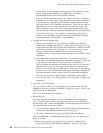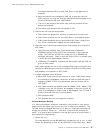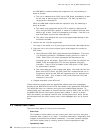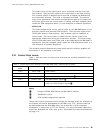
This soft copy for use by IBM employees only.
Additional Information
The switch-on-a-chip is a scalable, non-blocking, shared buffer switching
module that was developed at the IBM Research Laboratory in Zurich,
Switzerland. This is the same switch that is used in other IBM ATM switches,
such as the IBM 8260 Nways Multiprotocol Switching Hub and the IBM Nways
2220 Broadband Network Switch.
The architecture of the expansion unit is similar to that of the IBM 8260:
•
Each module contains CAP/CAD components to interface to the ATM
backplane.
•
The ATM backplane is fully passive and uses female connectors to improve
availability.
•
The ATM backplane is point-to-point wired to connect each module directly
to the switch-on-a-chip.
Note
This means that the IBM 8260 ATM CPSW Module is
not
supported in the
IBM 8285 Expansion Chassis, which also means that any
CPSW-exclusives, such as switch redundancy, are not supported.
However, the architecture is different in several key ways:
•
The control point is in a separate module (the base unit) from the switch.
•
The control point shares a set of CAP/CAD components with the ATM ports.
3.2 Switching Fabric
As described above, there are two switching mechanisms used in the IBM 8285,
depending on whether the base unit is operating with or without an expansion
unit. The following sections describe in detail the switching mechanism in each
case.
3.2.1 Switching in the IBM 8285
This section describes the switching mechanism in the IBM 8285.
Before going into further details about the switching function of the 8285 switch,
it is necessary to understand the internal frame format it uses. This format is
described below.
3.2.1.1 Internal Cell Format
The 8285 switch uses the same internal frame format, a 64-byte extension of the
standard 53-byte ATM cell, as the 8260 hub. This cell is constructed by the
following process:
•
The ATM cell received from a port by the SFE.
•
The SFE calculates a header error check value and compares it to the HEC
that arrived in the cell′s header.
•
If no error is detected (the calculated and transmitted HEC values match),
the SFE strips the HEC from the cell′s header and sends the resulting 52-byte
ATM cell to the CAP/CAD.
22 ATM Workgroup Solutions: Implementing the 8285 ATM Switch



